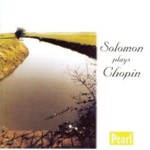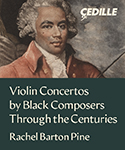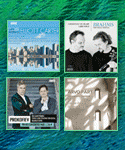In 1994 Testament released Solomon’s complete studio Chopin recordings on a single CD, well transferred from the best existing source material. That hasn’t stopped Pearl’s Roger Beardsley from producing another “Solomon plays Chopin” reissue. Beardsley effects noisier but impressively full-sounding transfers for all of the Solomon Chopin titles. Why he omits the Fourth Ballade and the 1943 remake of the Op. 25 No. 3 Etude is anybody’s guess. In their place Beardsley substitutes two Liszt pieces and one Bach/Liszt selection. Naturally this makes no programming or marketing sense. Collectors who want Solomon’s Chopin already own the Testament disc, or at least the option to own it. Moreover, the non-Chopin sides are easily obtainable on other CD releases. Now that we’ve demonstrated the utter pointlessness of this reissue (my rating reflects performance and sound only), let’s focus on the music.
Solomon’s Chopin is never less than technically solid and musically tasteful, but not always memorable. Compare, for instance, his superficially dashing F major Op. 10 No. 8 Etude to the young Horowitz’s contemporaneous version with its greater exactitude and variety of articulation. Or play Solomon’s neat, poised A-flat Polonaise next to Rubinstein’s more ardent, pulse-quickening version, with its infectious swagger. The same observations hold true for the A major Polonaise, although it’s interesting to hear Solomon take the left hand down an octave in a couple of spots. And how bland and reserved Solomon seems in the Fantasy in contrast to the greater dynamic breadth, color, and drama Cortot brings to his recording.
The Berceuse, though, ranks among the shellac era’s miracles: Solomon colors the left-hand ostinato in the manner of a muted string section underneath the ravishingly phrased right-hand filigree. Liszt’s La Leggierezza, slightly pushed and overpedalled, yields to Arrau and Cortot’s more seasoned accounts (not to mention the extraordinary 1941 Moiseiwitsch version). Au bord d’une source and the Bach/Liszt fare better. Incidentally, what significance does Pearl’s cover photo of a stream surrounded by a field bear upon the music or the pianist?
































